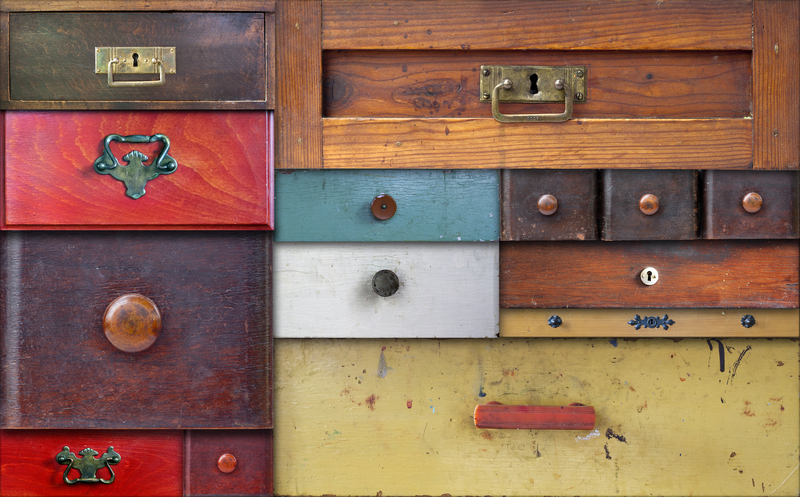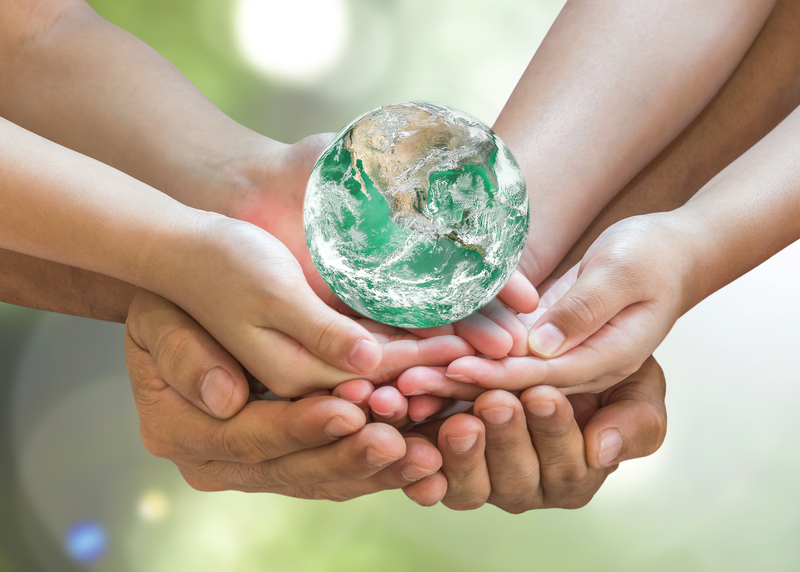Protecting Wildlife by Disposing of PPE Waste Responsibly
The COVID-19 pandemic introduced personal protective equipment (PPE) such as masks, gloves, and face shields into our daily lives. While PPE was crucial to human safety, it has also resulted in a surge in environmental waste, threatening global wildlife and natural habitats. Proper PPE waste management is essential for safeguarding both ecosystems and animal species. In this article, we'll explore how responsible disposal of PPE waste can protect wildlife, and share actionable steps individuals and communities can take to make a difference.
Understanding the PPE Waste Crisis
As billions of people worldwide adapted to using masks and gloves, the volume of single-use PPE waste soared. Unfortunately, much of this waste found its way into rivers, forests, oceans, and city parks. According to environmental studies, an estimated 129 billion face masks and 65 billion gloves are used and disposed of every month globally.
- Masks commonly made from polypropylene, a form of plastic that doesn't biodegrade easily
- Gloves often composed of latex, vinyl, or nitrile--materials that can last years in the environment
- Face shields and other plastics contribute to the accumulating pollution levels
The improper disposal of these materials can have devastating effects, especially on wildlife protection efforts. Protecting wildlife depends on environmentally conscious human actions, which are now more important than ever in the era of increased PPE waste.

How PPE Waste Threatens Wildlife
Wildlife faces numerous risks from careless PPE waste disposal:
- Ingestion and choking: Birds, fish, marine mammals, and terrestrial animals often mistake PPE for food, leading to fatal consequences.
- Entanglement: Animals can become entangled in masks and gloves, impairing their ability to move, feed, or evade predators.
- Microplastic pollution: Over time, sun and weather break down PPE plastics into microplastics that can enter food chains--potentially affecting human health, too.
- Habitat contamination: PPE waste clutters habitats, disrupting nesting grounds, riverbeds, and marine environments where wildlife thrives.
The global spread of PPE waste is a stark reminder of our interconnectedness with nature. The responsibility to act sustainably and protect wildlife through eco-friendly PPE disposal is more urgent than ever.
The Essential Link: PPE Waste Management and Wildlife Conservation
At the crossroads of public health and environmental stewardship lies a critical question: How can we protect wildlife by disposing of PPE waste responsibly? Sustainable solutions require both improved infrastructure and personal accountability.
Here's why responsible PPE waste management matters for wildlife:
- Reduces direct harm: Limiting the amount of PPE that ends up in habitats decreases problems like eating, choking, or becoming entangled.
- Supports biodiversity: Preventing pollution helps conserve endangered species and maintain healthy, functioning ecosystems.
- Minimizes long-term impacts: Slows the formation of microplastics that pollute soil and waterways and harm multiple species over generations.
Best Practices for Responsible PPE Waste Disposal
Protecting wildlife with responsible PPE disposal starts with understanding and applying effective waste management strategies. Whether you're at home, work, or outdoors, follow these best practices:
1. Always Place PPE in Designated Waste Bins
- Never throw used masks or gloves on the ground, in natural areas, or in regular recycling bins.
- Use lined trash bins with a lid to prevent pollution and wind dispersal.
- If there are special PPE disposal bins in public places, use them as designed.
2. Do Not Flush PPE Waste
- Flushing PPE down toilets or drains leads directly to sewage systems, increasing the risk of sewage and marine contamination.
3. Cut the Ear Loops on Masks
- Before disposing of disposable masks, cut the ear loops to reduce the risk of wildlife entanglement, especially for birds and small mammals.
4. Participate in Community Clean-up Initiatives
- Join or organize events aimed at collecting and safely disposing of PPE litter in parks, beaches, and waterways.
- Education and advocacy are critical--spread awareness in your local community.
5. Choose Reusable PPE When Possible
- Opt for washable and reusable masks whenever possible--a simple yet effective choice for both personal protection and environmental health.
- Ensure reusables are properly cleaned between uses to maintain safety.
6. Separate PPE Waste from Recyclables
- PPE waste like disposable masks and nitrile gloves cannot be recycled with regular plastics--place them in general waste unless specified otherwise by local authorities.
7. Advocate for Better PPE Waste Policies
- Encourage local governments and organizations to implement clear guidelines, provide accessible disposal units, and develop innovative recycling infrastructure.
Innovative Solutions for PPE Waste Disposal
As the issue of PPE pollution has accelerated, so have innovative solutions for managing this waste and protecting wildlife habitats:
- PPE recycling programs: Some companies and municipalities have launched specific PPE collection and recycling schemes, converting used masks and gloves into construction materials or energy.
- Biodegradable alternatives: Researchers are developing PPE made from natural fibers that break down safely in the environment.
- Awareness campaigns: Environmental NGOs are launching multimedia efforts to educate the public about the dangers of PPE litter and how to properly dispose of it.
- Smart bin technology: Automated and sensor-equipped bins are being piloted in some urban areas to reduce PPE litter and improve sanitary collection.
Supporting or advocating for these solutions helps advance the cause of wildlife conservation through responsible PPE waste management.
Case Studies: PPE Waste Impact on Wildlife
Several real-world cases highlight the urgent need for effective PPE waste disposal to protect wildlife around the globe:
- The Dutch Rescue: In the Netherlands, a gull was found entangled in a blue surgical mask, unable to free itself. Fortunately, it was rescued, but the case exemplifies the risks posed to birds and small animals worldwide.
- Marine Life in Peril: In Brazil, researchers documented a penguin that had died after ingesting a latex glove. Many sea turtles and fish have similarly ingested masks and gloves, mistaking them for food or jellyfish.
- UK's PPE Pollution: Conservation groups in the UK have reported a significant uptick in masks and gloves on beaches and riverbanks--posing new risks to aquatic birds and river mammals.
These distressing stories serve as a powerful reminder that our day-to-day actions have global repercussions.
Why Individual Action Matters
Solutions often start at the grassroots. By taking personal responsibility for PPE waste and advocating for better systemic policies, each of us can play a pivotal role in protecting wildlife from pollution. Here's how you can amplify your impact:
- Lead by example: Practice responsible disposal and share your knowledge with friends, family, and colleagues.
- Volunteer and support: Join local clean-up groups, wildlife support networks, or environmental advocacy organizations.
- Promote alternatives: Encourage workplaces, schools, and local governments to invest in reusable or biodegradable PPE options.
Policy Changes and Industry Responsibility
Governments and manufacturers play an essential role in curbing PPE pollution and protecting wildlife. Policy measures and corporate initiatives can include:
- Clear regulatory standards for PPE disposal at home, work, and in public spaces
- Investment in research for safer, greener PPE technologies
- Mandatory education programs in schools and workplaces about the environmental risks of PPE litter
- Public awareness campaigns to change cultural attitudes towards single-use plastics and PPE
By working together, individuals, policymakers, and industry leaders can ensure that the benefits of PPE do not come at the expense of the natural world.

Frequently Asked Questions about PPE Waste and Wildlife Safety
Q1: Can PPE be recycled?
Most single-use masks and gloves cannot be recycled with regular curbside programs. Specialized recycling schemes exist in some locations--check with your local authority.
Q2: What should I do if I see PPE waste in nature?
If safe to do so, use gloves or tools to collect and dispose of PPE in a sealed bin. Always wash your hands afterwards to avoid contamination.
Q3: How can I tell if my PPE is biodegradable?
Read packaging labels--genuine biodegradable PPE is typically made from natural fibers and labeled accordingly. When in doubt, contact the manufacturer or supplier.
Q4: Are reusable masks as effective as disposable masks?
For everyday use, well-made reusable fabric masks can be effective when washed regularly. Always follow public health guidelines in your area.
Q5: How does PPE waste affect human health?
Besides harming wildlife, PPE pollution can enter food and water chains as microplastics, with unknown long-term consequences for human health.
Conclusion: Protecting Nature Through Responsible Actions
The COVID-19 crisis has emphasized humanity's reliance on personal protective equipment, but it has also spotlighted our shared responsibility to protect the environment. By disposing of PPE waste responsibly, we can safeguard wildlife, support biodiversity, and ensure that our fight for public health does not come at the expense of the planet's most vulnerable creatures.
Every mask, glove, and face shield disposed of safely is a step towards preserving our natural world for future generations.
Let's make responsible PPE disposal a habit--for ourselves, for our communities, and most importantly, for the wildlife that call this planet home.